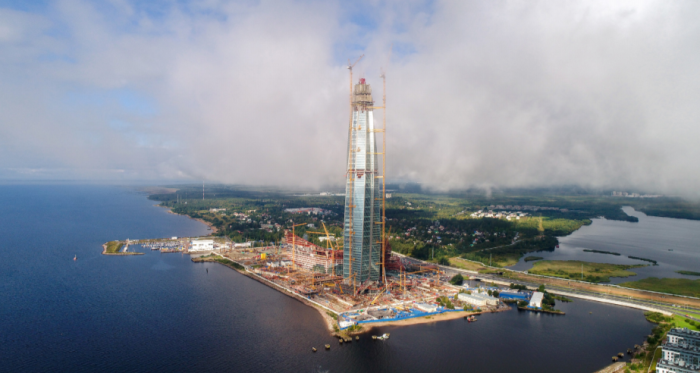
The Problem
The Lakhta Tower is a building that was completed in 2018, designed for both social and business use on the shores of the gulf of Finland. Currently the tallest skyscraper in Europe at 462 m (1,515.75 ft), it was critical to get good-quality data before, during, and after the construction process.
The data-acquisition system had to be fully automated and able to send data to the contractor’s office. The box foundation strain monitoring system is the most ambitious and complex subsystem within the structural health monitoring of the tower. It was designed to analyze changes in the foundation’s stress-strain state, which was in the Guinness World Records 2015 as the world’s biggest reinforced concrete structure (19,600 m3 [25,635.83 yd3]). Due to the complexity of the project and engineering challenges involved, a system able to measure more than a thousand strain gages was required.
The Solution
SODIS Lab was responsible for the design and deployment of the strain-gage monitoring systems. The deployment of these systems was divided into six stages. They built the data collection nodes using Campbell Scientific data loggers and peripherals. Communication between the nodes was provided via a temporary wired data network. The data collection stations included CR1000 dataloggers and AVW200 VW interfaces. Multiplexer enclosures were installed directly above every outlet point of the signal cables. This solution significantly reduced the length of cable lines, reduced the likelihood of cable damage during construction, simplified repairs, allowed cable routing to be changed quickly, and eliminated the need to splice strain-gage cables.
For their vibrating-wire (VW) sensor-based monitoring, SODIS chose to work with Monitoring Solutions (MonSol) who, at the time of this project, had been providing Campbell-based VW and vibrating-wire spectral analysis (VSPECT™) solutions in Russia for many years. Functioning as a subcontractor to SODIS, MonSol not only supplied Campbell instruments, but did so at the integrated-systems level by providing the data-collection platform.
The Outcome
Campbell Scientific-based data-acquisition systems provided excellent-quality data during the construction of the Lakhta Tower and were able to manage a large number of sensors. The versatility of the data loggers and VW interfaces made it easy to integrate geotechnical equipment into the strain monitoring systems. The VSPECT™ technology provided great immunity to external noise sources.
The solution significantly reduced the length of cable lines and the likelihood of cable damage during construction. Repairs were simplified and more cost effective, allowing cable routing to be quickly changed and eliminating the need to splice strain-gage cables. Furthermore, the integration of instrumentation installed into the building management system (BMS) during construction provided the important function of ongoing structural monitoring.
Case Study Summary
Application
A complex system to measure more than a thousand strain gagesLocation
Saint Petersburg, RussiaProducts Used
AVW200 CR1000Contributors
Campbell Scientific Ltd. regional officeParticipating Organisations
SODIS LabView the PDF